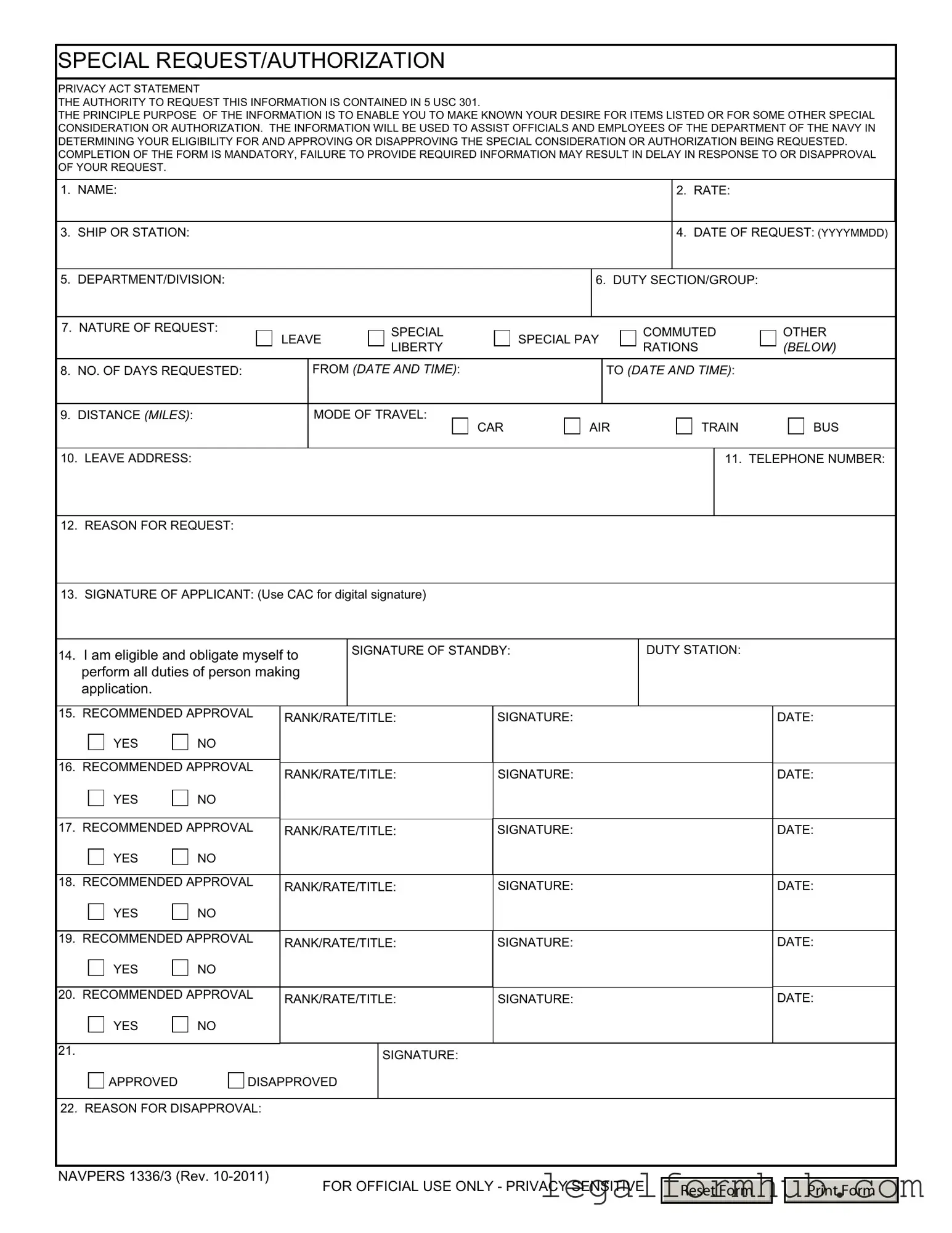The DD Form 214, Certificate of Release or Discharge from Active Duty, serves as a comprehensive record of a service member's military service. Similar to the Navpers 1336/3, it requires personal information, including the individual's name and service details. This form is essential for veterans seeking benefits and employment opportunities, as it summarizes their military experience. Both documents aim to facilitate requests and approvals within the military structure, ensuring that the necessary information is available for decision-making processes.
Understanding the various forms required for military service can be daunting, but it is essential for ensuring that processes are followed correctly. For instance, the Durable Power of Attorney (DPOA) allows individuals to designate someone to make important decisions when they become unable to do so. This is crucial not only for personal matters but also in military contexts where timely decisions are necessary. For further details on this critical legal document, you can visit arizonapdfs.com/durable-power-of-attorney-template/.
The DA Form 31, Request and Authority for Leave, is another document that parallels the Navpers 1336/3 in its purpose of requesting leave. This form is utilized by Army personnel to formally request time off, detailing the dates and reasons for the absence. Like the Navpers 1336/3, it requires approval from superiors and outlines the obligations of the requesting individual. Both forms play crucial roles in managing personnel leave and ensuring operational readiness.
The SF 86, Questionnaire for National Security Positions, is a document that collects personal information for security clearance purposes. While its focus is on background checks rather than leave requests, it shares a similar requirement for detailed personal information. Both the SF 86 and the Navpers 1336/3 necessitate accuracy and completeness to facilitate decision-making. The information gathered in both forms is used to assess eligibility for specific roles and responsibilities within the military framework.
The AF Form 988, Leave Request and Authorization, is used by Air Force personnel to request leave. This form, like the Navpers 1336/3, requires details such as the duration of leave and the reason for the request. Both documents are designed to streamline the leave approval process, ensuring that all necessary information is presented for review by commanding officers. The emphasis on proper documentation in both forms highlights the importance of maintaining accountability within the military.
The NAVPERS 1070/613, Administrative Remarks, serves as a record for various administrative actions, including leave requests. It provides a formal way to document approvals or disapprovals of requests similar to the Navpers 1336/3. Both documents require signatures from superiors, indicating that they have reviewed the request. This similarity underscores the importance of maintaining clear communication and documentation in military operations.
The SF 50, Notification of Personnel Action, is a form used to document various employment actions, including promotions and leaves of absence. While it serves a broader purpose than the Navpers 1336/3, both documents share the need for accurate personal information and official approval. The SF 50 provides a formal record of employment status changes, just as the Navpers 1336/3 records requests for special considerations within the Navy.
The DD Form 1150, Request for Issue or Turn-In, is utilized for requesting the issuance of military property. Although it is focused on material requests rather than personal leave, it shares similarities with the Navpers 1336/3 in terms of requiring specific details and approvals. Both forms are integral to the administrative processes within the military, ensuring that requests are documented and authorized appropriately.
